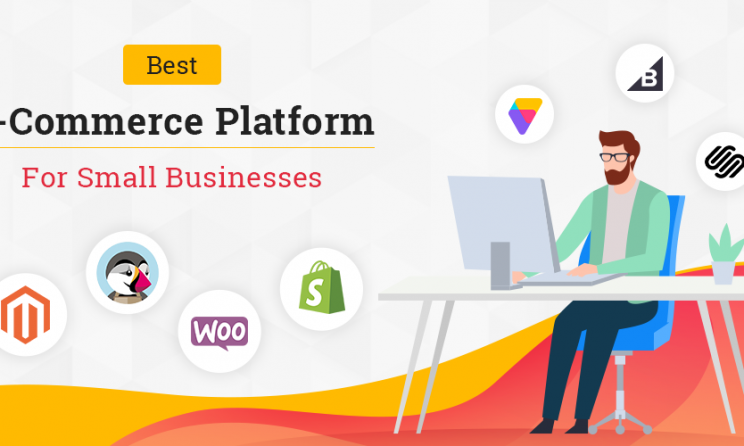
Free or paid? This is the key question that most eCommerce aspirants ask themselves when they’re thinking about which platform to use. Should they use free, open source eCommerce software and create online store free, or opt for paid, fully hosted solutions?
Contents
The Free Or Paid Debate
eCommerce is booming, even your corner bookstore, and tiny neighborhood arts & crafts stores seem to be selling online. It’s easy and cheaper than setting up and managing a physical store, plus have a wider reach. So, whether you’re just thinking of starting an eCommerce venture or you are a big store looking for an online presence, you first need to decide if you want the fully customizable free eCommerce software like WooCommerce and Magento, or a SaaS, like BigCommerece and Shopify?
Free Open Source Vs Paid Fully Hosted
So, which is your choice? Wait, what exactly are they – Open Source and Fully Hosted?
Free, Downloadable, OpenSource eCommerce Software
The free open source platforms like Magento, OpenCart, and WooCommerce are independent platforms or plugins for other services. For instance, Magento and Opencart are independent software, full-featured eCommerce solutions that you can install and set up to run your store. WooCommerce, on the other hand, is a plugin for WordPress that adds eCommerce functionality to the WordPress platform.
You can download the software and install it on the server of your choice, set it up, and customize it. As it’s an open source software, you have access to their source code, so you can change and add features as you like.
Paid Fully Hosted SaaS
These are dedicated eCommerce platforms that are offered as Software as a Service. They have all their resources on the cloud, and you pay a monthly subscription to use the platform and its functionalities. You don’t get deep customization capabilities with its free plan.
Free And Open Source To Create Online Store Free
So, should you go the free open source way?
How Do The Open Source Platforms Work?
You download the software and install it on a server. That is, you pay for good hosting service, then install the Open Source solution of your choice, like OpenCart or WooCommerce on the web host’s server. You then set it up, configure it properly, then build your store. You generally get the open source eCommerce software free of cost.
How Much Can I Save By Using These Platforms?
This depends on your needs and your skills. If you can install, setup, and manage the entire store yourself, you will save a lot. You will just have to pay the web hosting fee, which will be much less than the subscription cost of the fully hosted solution. Also, if you can customize the software yourself to suit your store’s needs, you can save more.
So, in total, you can potentially save thousands of dollars each year if you choose the free, open source solutions.
What Is The True Cost Of Free?
Well, that’s the catch. First, you need web hosting. For a full, secure eCommerce website you will need more security, so you will have to pay for a Virtual Private Server. You will also need good bandwidth, excellent uptime, and increasing storage capacity as your business grows. So, your web hosting fee may not be very small.
Then comes the setting up, maintenance, customization, security, upgrades, etc. If you’re a techie and the type who loves tinkering with the car as much if not more than driving it, then it’s a good fit. You can choose the open source solution to create online store free and enjoy doing all the backend tasks as well as running the store.
You can get many apps/plugins to extend the features, but you still have to install and set them up to work with the eCommerce platform.
If you’re a team of techies with varied expertise, who have decided to use your combined skills to set up a good online business, then yes, this is a good choice.
If you can afford to hire a team of professionals to set up and manage the backend, yes, then the open source platforms are great choices. But, it will increase your running cost. So, free isn’t really free.
Paid And Fully Hosted – No Worries About The Backend Services
Thinking about choosing a paid platform?
How Do The Fully Hosted Solutions Work?
The fully hosted services have all their resources deployed on the cloud. Instead of purchasing the software, you subscribe to use the resources. Your store is hosted on the eCommerce platform’s own server, and they provide all the tools to design the shop, load the products, and sell online. The features available to you depend on the subscription plan you choose. You can start with a low-end plan and upgrade as your needs grow, but you cannot really create online store free.
Can You Customize Them?
While you don’t get access to the software’s source code, there are still ways to customize the functionality and extend the features using the apps available for each platform. Most of the big eCommerce platforms have an app marketplace where you can find the plugins needed to do whatever task you want to accomplish.
What Are The Costs Of These Platforms?
Well, each SaaS eCommerce platform has its own plans and fee structure. Most of them, like Shopify and BigCommerce, list their plans and prices, so you can get a clear idea of your monthly costs. Some platforms, like Shopify, also charge a transaction fee for each sale. This transaction fee generally reduces as you upgrade to higher plans.
You may also have to pay monthly charges for any apps/plugins you use to add more features to your store.
What Are The Benefits You Get?
With hosted solutions, you have to pay monthly fees, but you’re relieved of all the technical nitty-gritty and the backend worries. You don’t need to install, manage, maintain, and upgrade the software, networks, etc. All this is done by the solution provider. They also take care of the backend upgrades, security, and other issues. You are left free to manage your store and to grow your business.







